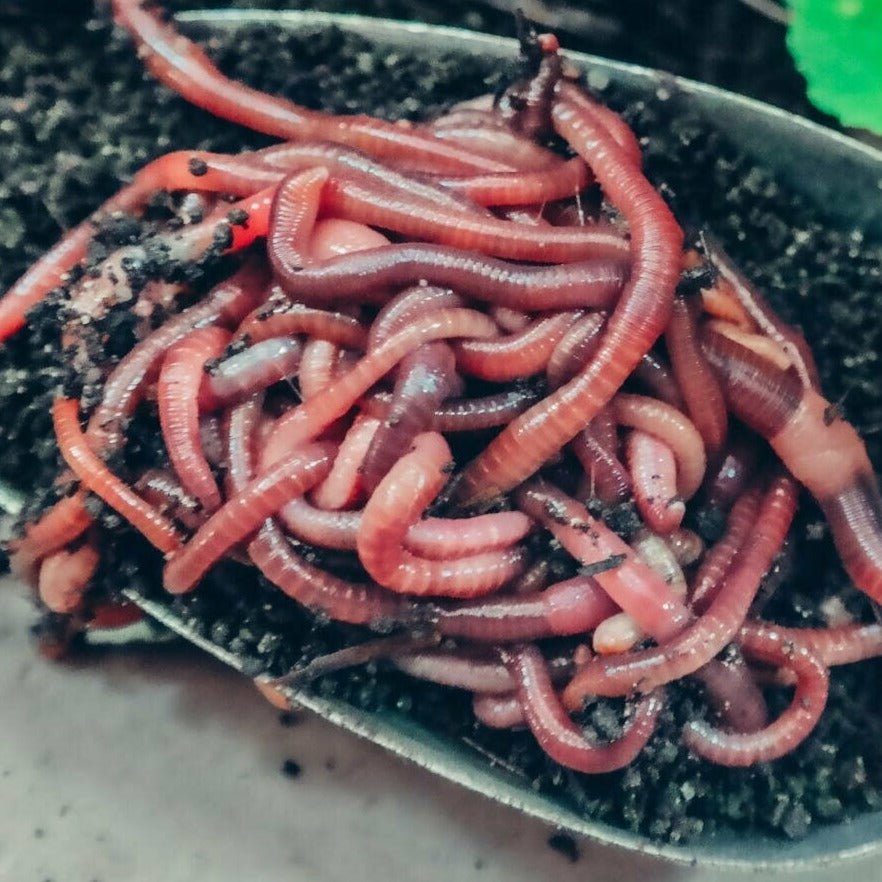Improve Your Fishing Success with Red Wiggler Express Supplies
Improve Your Fishing Success with Red Wiggler Express Supplies
Blog Article
Red Wigglers: The Unsung Heroes of Organic Waste Recycling
Red wigglers, or Eisenia fetida, function as important agents in the organic waste recycling process, changing discarded materials into useful vermicompost. Their efficient breakdown of natural issue not only enhances soil quality but additionally adds to sustainable waste administration methods. As the world significantly seeks solutions to fight waste build-up and improve farming performance, recognizing the duty of these worms comes to be vital. What systems enable them to grow in garden compost atmospheres, and exactly how can they be properly made use of in both household and industrial settings? Discovering these concerns exposes the wider effects of vermicomposting in our ecological landscape.
What Are Red Wigglers?
The impressive strength of red wigglers, clinically called Eisenia fetida, emphasizes their crucial function in organic waste recycling. These little, reddish-brown earthworms are generally located in breaking down raw material, such as compost heap and manure lots. Lake Hickory Bait. Unlike various other earthworm species, red wigglers prosper in nutrient-rich environments and are highly efficient at damaging down natural materials, making them crucial for vermicomposting

(Lake Hickory Bait)Along with their duty in waste decrease, red wigglers add to soil health and wellness by boosting dirt structure and aeration with their tunneling tasks (Lake Hickory Bait). Their visibility in composting systems not only improves decay prices yet additionally advertises a sustainable method to lose administration, showing their importance in ecological conservation initiatives
Advantages of Composting With Worms
Composting with worms, particularly red wigglers, offers various advantages that enhance both waste management and dirt health and wellness. These worms effectively damage down organic waste, transforming it right into nutrient-rich vermicompost that improves dirt. This procedure speeds up decay, enabling a quicker recycling of kitchen area scraps and other natural products compared to conventional composting methods.
Additionally, the vermicompost created by red wigglers is including advantageous bacteria, which aid boost soil framework, aeration, and moisture retention. This enhances the overall health of plants, advertising strenuous growth and increased returns in yards and agricultural settings. The usage of worms in composting reduces the production of greenhouse gases, such as methane, adding to a more sustainable waste management system.

Just How to Beginning Vermicomposting
Establishing a vermicomposting system is a simple process that can generate significant benefits for both waste administration and soil enrichment. To begin, pick a suitable container, such as a plastic bin or wooden box, with adequate ventilation openings to guarantee correct airflow. The dimensions ought to preferably be about 2 feet by 3 feet, enabling adequate room for the worms to flourish.
Following, prepare bed linens product, which can contain shredded paper, cardboard, or coconut coir. This bed linen must be dampened to produce an appropriate environment for the worms. When the bed linen remains in area, present red wigglers (Eisenia fetida) right into the bin, typically around one pound of worms for every square foot of area.
Following the placement of worms, add natural waste, such as fruit and vegetable scraps, coffee premises, and smashed eggshells. Prevent including dairy, meat, or oils, as these can create smells and draw in insects. Position the container in a shaded, temperature-controlled area to maintain optimum problems for worm activity. With these steps, you will effectively launch a vermicomposting system that adds to lasting waste administration and enhances your soil.
Maintaining a Healthy And Balanced Worm Container
(Red Wiggler Express)Maintaining a worm bin growing needs normal interest and like make certain the health and wellness of the red wigglers and the efficiency of the composting process. Correct maintenance starts with checking the moisture degrees; the container ought to perspire however not saturated. A great general rule is to maintain an uniformity similar to a wrung-out sponge.
Aeration is vital. Gently blending the bed linens and food scraps every few weeks stops compaction and ensures that all worms have access to oxygen. In addition, it is essential to feed the worms suitably. A well balanced diet of fruit and vegetable scraps, coffee grounds, and smashed eggshells should be provided in small amounts to stay clear of overfeeding, which can result in smells and pests.
Temperature level regulation is another important element. Red wigglers prosper in a variety of 55 to 77 levels Fahrenheit. If the bin becomes too hot or cold, the worms may end up being worried - Lake Hickory Bait. Last but not least, periodically look for signs of wellness, such as worm population growth and the presence of healthy and balanced spreadings. By carefully managing these factors, one can maintain a durable and efficient worm container.
Effect On Lasting Living
The successful maintenance of a worm bin not only profits the health and wellness of red wigglers however also adds substantially to lasting living practices. By reusing natural waste, such as kitchen area scraps and yard particles, red wigglers assist divert significant amounts of material from landfills. This reduction in waste not just reduces greenhouse gas emissions yet likewise lessens the environmental worry connected with waste management.
In addition, the spreadings created by red wigglers function as a nutrient-rich natural fertilizer, boosting soil health and advertising plant growth. This all-natural option to chemical plant foods supports sustainable farming and gardening methods, decreasing dependence on synthetic inputs that can hurt communities. In addition, worm composting cultivates recognition of waste monitoring, urging individuals and communities to embrace more lasting behaviors.

Conclusion
In summary, red wigglers serve as important factors to natural waste reusing with their reliable decay of natural products. Their capability to create nutrient-rich vermicompost enhances dirt health and supports sustainable farming practices. By incorporating vermicomposting right into waste monitoring approaches, people and areas can significantly reduce waste while advertising ecological sustainability. The duty of Eisenia fetida in cultivating healthy and balanced environments highlights the significance of these microorganisms in achieving sustainable living and boosting soil fertility.
Report this page